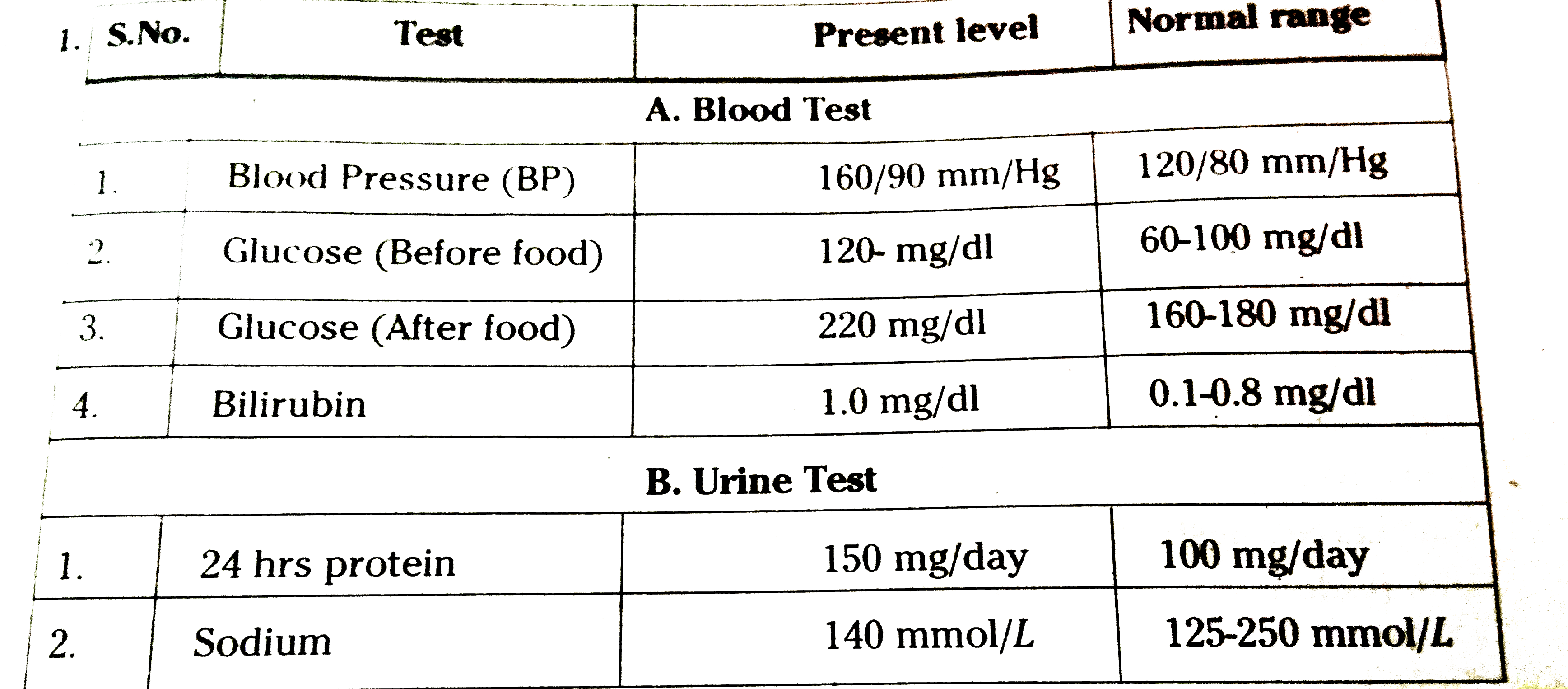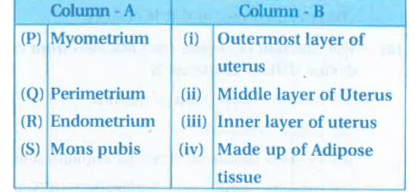A woman 'S' Is in uremia stage. Therefore…………..
(i) Legs and hands are swollen
(ii) Body is accumulated with water and wastes
(iii) Weakness and tiredness
(iv) No harm to kidneysSolution in Telugu
Extra Water
Waste products
Extra water and waste products
Urea
Step by step video & image solution for A woman 'S' Is in uremia stage. Therefore………….. (i) Legs and hands are swollen (ii) Body is accumulated with water and wastes (iii) Weakness and tiredness (iv) No harm to kidneys by Biology experts to help you in doubts & scoring excellent marks in Class 10 exams.
Updated on:21/07/2023Topper's Solved these Questions
- ESTIMATION OF PARTICULATE POLLUTANTS IN AIRBOOK - VGS PUBLICATION-BRILLIANTCHAPTER - ESTIMATION OF PARTICULATE POLLUTANTS IN AIREXERCISE - Choose the correct answers
8 Videos
- EXCRETION- THE WASTAGE DISPOSING SYSTEMBOOK - VGS PUBLICATION-BRILLIANTCHAPTER - EXCRETION- THE WASTAGE DISPOSING SYSTEMEXERCISE - CREATIVE QUESTIONS FOR NEW MODEL PAPER (4 MAKS QUESTIONS)
44 Videos
Similar Questions
These present in air are called particulate matter.
View Solution
Which test is required to know bilirubin?
View SolutionThe char5acteristic(s) common to urea, uric acidn and ammonia is/are
(i). Theya re nitrogenous wastes.
(ii). They all need very largwe amount of water for excretion.
(iii). They are all equally toxic.
(iv). They are produced in the kidneys
View SolutionMatch column I with column II and select the correct option from the codes given below ltBrgt Column IColumn IIA. Uremia(i). Ketone bodies in urineB. Ketonuria(ii). Artificial kidneyC. Glycosuria(iii). Glucose in urineD. Blood dialyser(iv). Accumulation of urea in blood
View SolutionMatch the columns and choose the correct options {:(,I,,II),((p),"e-waste",(i),"Waste clothing"),((q),"Biodegradable waste",(ii),"Dirt"),((r),"Inert waste",(iii),"Green waste"),((s),"Composite waste",(iv),"Irreparable waste"):}
View Solutionwhat is the BOD of a weak organic waste water body?
View SolutionWhich is not a physical method of waste water treatment. (i) Floatation (ii) Filtration (iii) Phyto remediation (iv) Oxidation
View SolutionList the most important feature of the following stages : (i) S-phase, (ii) Zygotene, (iii) Pachytene: (iv) Anaphase-I
View SolutionA feature that urea, uric acid and ammonia all have (i) They are nitrogenous waste materials. (ii) Higher levels of water are required for the emission of all these. (iii) They are all equally toxic. (iv) They are produced in the kidneys.
View Solutionসমসংস্থ অঙ্গের উদাহরণ হল- [i]মানুষের অ্যাপেন্ডিক্স ও চোখ [ii] ঘোড়ার পা ও মানুষের হাত [iii]মানুষের চোখ ও কসিক্স [iv]মানুষের হাত ও তিমির ডানা
View SolutionMatch Column A with Column B

(A) (P-i), (Q-ii), (R-iv), (S-iii)
(B) (P-ii), (Q-i), (R-iii), (S-iv)
(C) (P-ii), (Q-iii), (R-iv), (S-i)
(D) (P-iv), (Q-iii), (R-ii), (S-i)
View SolutionMatch the following (A) (i-P), (ii-S), (iii-R), (iv-Q) (B) (i-Q), (ii-S), (iii-P), (iv-R) (C) (i-Q), (ii-P), (iii-R), (iv-S) (D) (i-P), (ii-R), (iii-Q), (iv-S)
View SolutionThe characteristic(s) common to urea, uric acid and ammonia is/are (i). They are nitrogenous wastes. (ii). They all need very large amount of water for excretion. (iii). They are all equally toxic. (iv). They are produced in the kidneys
View SolutionMatch column I with column II and select the correct option from the codes given below ltBrgt Column IColumn IIA. Uremia(i). Ketone bodies in urineB. Ketonuria(ii). Artificial kidneyC. Glycosuria(iii). Glucose in urineD. Blood dialyser(iv). Accumulation of urea in blood
View SolutionIn uremia, artificial kidney is used for removing accumulated waste products like urea by the process called -
View SolutionA woman 'S' Is in uremia stage. Therefore…………..
(i) Legs and hands are swollen
(ii) Body is accumulated with water and wastes
(iii) Weakness and tiredness
(iv) No harm to kidneys
View Solution
